Are you looking to compare Starlink Vs NBN to see which is the best option? If yes, you have stumbled upon the perfect page.
As Starlink, the emerging leader in satellite internet, and NBN, Australia’s national wholesale broadband network, have caught attention in recent days, it is crucial to understand their unique offerings.
As someone exploring the latest in internet technology, I’ve been closely comparing Starlink and the National Broadband Network (NBN) to understand which service might best meet my needs.
With Starlink offering cutting-edge satellite technology promising fast internet speeds globally, it stands out as a strong contender against Australia’s established NBN, which relies on a mix of fiber and existing cable infrastructure.
Both have advantages, but as I delve deeper, I’m particularly curious about how they compare in terms of speed, reliability, and value for the average user.
Personally, I’m leaning towards Starlink for its innovative approach and potential for global coverage, especially in areas where traditional broadband services are less reliable.
In this comparison guide, I have shared every detail about Starlink vs NBN. I hope it helps.
So, without any further ado, let’s get started.
Table of Contents
How Starlink And NBN Works
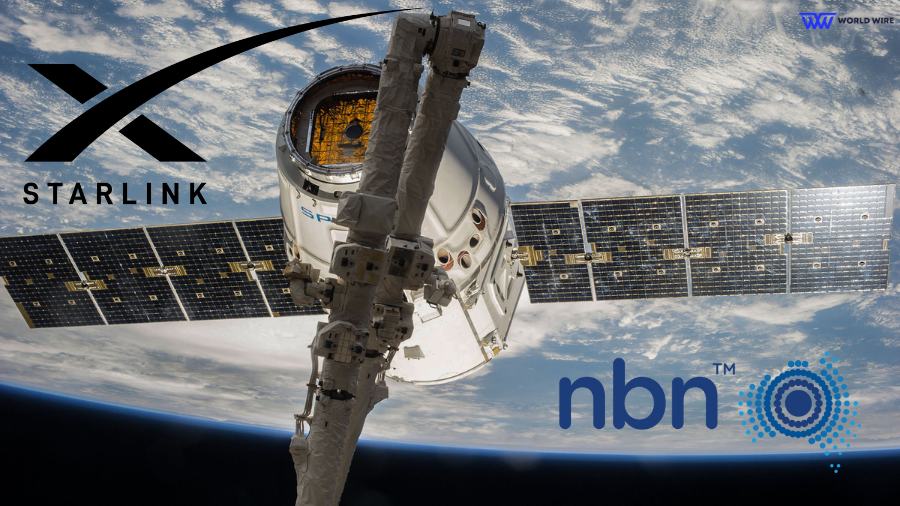
Starlink is a satellite internet provider owned by Elon Musk’s space company, SpaceX. It serves remote areas in over 99 countries worldwide.
Starlink uses a constellation of satellites revolving around the Earth in Low Earth Orbit to provide high-speed internet.
These satellites are closer to Earth at an altitude ranging from 211 to 382 miles (340 to 614 kilometers). There are around 6500 Starlink satellites in space.
The National Broadband Network (NBN) is Australia’s national wholesale broadband network.
It uses various technologies to deliver internet access to homes and businesses, depending on location and infrastructure availability.
It provides internet services through Fiber-to-the-Premises (FTTP), Hybrid Fibre Coaxial (HFC), Fixed Wireless, and satellites.
Sky Muster is the satellite internet provided by NBN Co. The NBN Sky Muster uses satellites in geostationary orbit at an altitude of above 35,000 km from the Earth. There are only two Sky Muster satellites.
Here is a table summarizing the key differences between Starlink and NBN.
| Features | Starlink | NBN |
| Technology | Constellation of low-Earth orbit satellites | A mix of fiber, cable, wireless, and satellite |
| Speeds | faster speeds than most NBN options | Varies depending on the technology (FTTP being the fastest) |
| Latency | Lower latency due to lower orbit | Varies depending on the technology |
| Availability | Global coverage in 99 countries (Still expanding) | Across Australia |
Starlink Vs NBN: Plan And Pricing

Here is the comparison of the Starlink vs NBN plan.
| Features | Starlink | NBN |
| Plans | One plan | Multiple plans with varying speeds and data allowances |
| Monthly cost | $139 |
|
| Setup cost | $199-$924 equipment charges +$30-$115 shipping | Free Installation |
| Download speed | 25Mbps-220Mbps | 25 Mbps- 50Mbps |
| Upload Speed | 5-10Mbps | 5 Mbps |
| Data | Unlimited |
|
| Latency | 20-40 ms | 600ms |
Starlink Plan And Pricing
Starlink offers only one plan for Australia, which is a residential plan that costs $139 monthly.
The Starlink Kit, which includes the dish and modem, has a one-time upfront cost of $199- $924 and shipping costs between $30 and $115.
The plan has unlimited data without data caps and no contracts, allowing you to cancel the subscription anytime for zero charges.
You can try the service for 30 days for free. If you do not like it, you can return the equipment and get a refund within 30 days.
NBN Plan And Pricing
NBN offers a variety of plans depending on the type of connection (Fixed Wireless or Satellite NBN) you can get in your area. These plans allow you to choose your speed tier and data allowance based on your needs and budget.
Fixed Wireless NBN plans have a data cap and unlimited data. Similarly, Sky Muster Satellite NBN plans have data caps with separate allowances for peak and off-peak hours and unlimited data. Prices start around $39 monthly.
NBN offers three types of satellite data plans: Sky Muster plans to start at $39.95, Sky Muster Plus plans to start at $49.95, and Sky Muster Plus Premium plans starting at $59.
Sky Muster Plus Premium plans offer unlimited data. All three types have sub-plans with different data allowances and prices.
NBN offers three fixed wireless plans: 100 GB starting at $64.95 monthly, 250 GB starting at $69.95 monthly, and the Unlimited data allowance starting at $74.95.
Starlink Vs NBN: Installation And Setup
When it comes to installation, Starlink offers a self-installation option. They provide a comprehensive kit with all the necessary equipment, including the dish, router, and cables.
The setup process involves finding a location with a clear view of the sky and physically mounting the dish. The Starlink app guides you through each step, making the process straightforward.
The Starlink kit requires an upfront cost. The Starlink app guides you through the setup process, which involves finding a location with a clear view of the sky and physically mounting the dish.
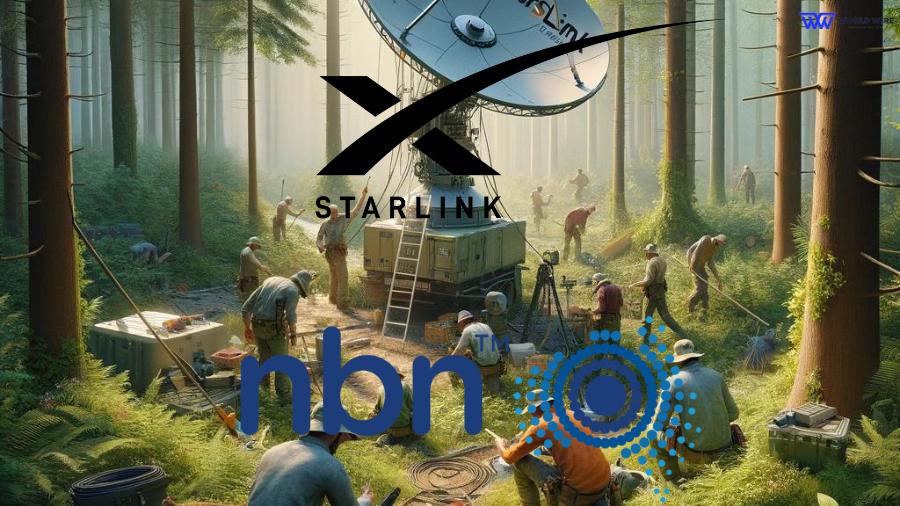
The Starlink setup requires some DIY skills and tools to mount the dish at a suitable location. For example, before you start installing, you need to complete a search for Starlink obstruction through the app.
NBN installation is generally handled by a technician from your chosen NBN internet service provider (ISP). The setup process depends on the type of NBN connection you are using.
Fixed Line (FTTP) requires minimal setup if you already have phone lines. Fixed Wireless might require an outdoor antenna installation, and Sky Muster NBN satellite, similar to Starlink, requires a dish installation.
NBN charges no installation fees.
In short, NBN installation is handled by professionals, while Starlink can be done by yourself. NBN installation is free, while Starlink has a higher upfront cost for the equipment.
Starlink Vs NBN: Speed And Performance
Starlink satellite offers a reliable internet speed, ensuring you can enjoy high-speed internet without interruptions.
Starlink offers download speeds of 20Mbps to 200Mbps and upload speeds of around 25Mbps, surpassing the performance of other satellite internet providers.
The speed of NBN depends on the type of connection you have. Sky Muster NBN plans can have maximum speeds of 25Mbps, and Sky Muster Plus Premium plans can have up to 100Mbps.
Fixed wireless NBN plans allow a maximum download speed of 75Mbps.
Starlink Vs NBN: Latency
Regarding latency performance, Starlink offers low latency, while NBN offers latency depending on the type of connection used.
Latency is the time it takes to complete an action on a network when a user initiates it and gets a response. It is measured in milliseconds.
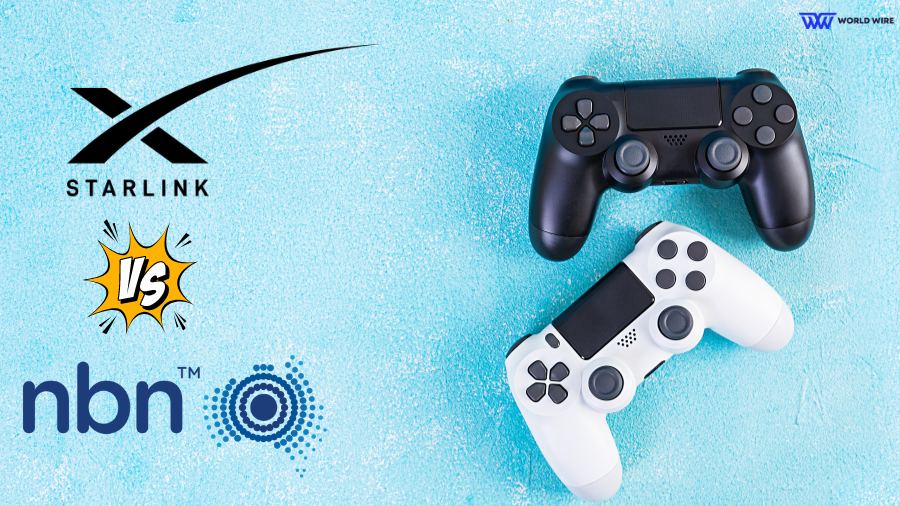
Low latency means good internet network performance, and high latency means slow internet.
Starlink offers a lower latency because its satellites orbit much closer to Earth. The latency is between 20ms and 40ms, which is good for most activities.
The latency offered by NBN for fiber connections is low at 10ms. Fixed wireless NBN has a latency of around 10-20 ms, while Satellite NBN has the highest latency at around 600 ms.
Starlink Vs NBN: Data Allowance And Caps
Starlink offers unlimited data for residential customers. However, to avoid congestion, Starlink prioritizes users with lower data usage during peak times.
So, very high-data users might experience some slowdown during these periods.
On the other hand, data allowance varies for NBN, depending on the plan you choose.
Fixed wireless offers unlimited data with no caps.
Standard Sky Muster plans have data caps and data allowances range from 150GB to 300 GB. Sky Muster Plus plan has unlimited data allowances except for streaming video and VPN during peak periods.
Starlink is good if you need unlimited data. But if your data usage is moderate, you can go with NBN plans with data caps. Sky Muster Plus offers a good balance of speed and unlimited data.
Starlink Vs NBN: Service Availability And Coverage
Starlink offers satellite internet services in many countries across the world, including Australia. You can get Starlink anywhere in the country.
However, it is especially recommended for rural areas where other internet options are not available. It has good coverage worldwide, reaching every corner of the country where it serves.
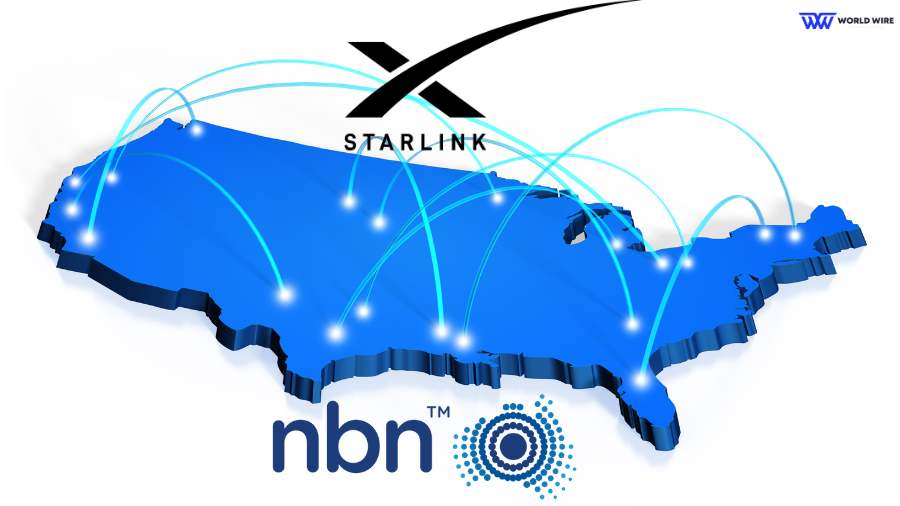
NBN availability depends on the type of connection you prefer. It has coverage all over Australia, especially in urban and suburban areas.
NBN is the better choice if you live in populated areas of urban locality in Australia, while Starlink is a good option for remote locations.
Starlink Vs NBN: Customer Experience
According to customer experience, Starlink Vs NBN is a decent service based on your needs and priorities. Both providers have received mixed reviews.
Customers say Starlink offers a better internet service with low latency than most fixed wireless and satellite internet providers, including NBN.
Some users have praised NBN for offering cheaper service than Starlink, with free installation and on-the-ground support.
Starlink Vs NBN: Final Verdict
Choosing between Starlink Vs NBN depends on what kind of internet experience you prioritize: speed and data freedom or affordability and stability.
Starlink boasts faster download speeds, reaching 100 Mbps compared to the average NBN speeds for its satellite plans. It also offers unlimited data, which is ideal for heavy data users.
NBN speeds are generally slower, with fixed wireless plans reaching a maximum of 75Mbps. NBN also offers an unlimited satellite internet plan.
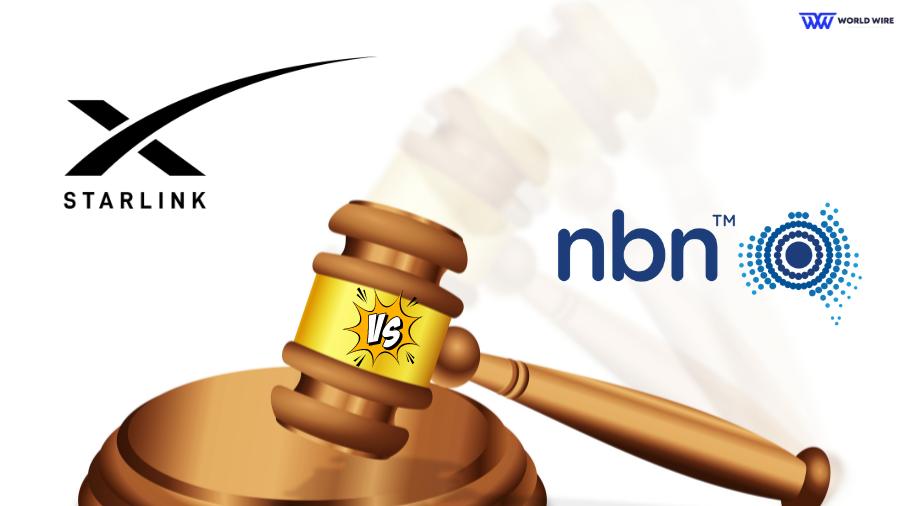
NBN fixed wireless and fiber internet has low latency, but its satellite internet has high latency. Starlink has lower latency than Sky Muster NBN.
Starlink’s single plan has a higher upfront cost for the equipment, while NBN has many plans at various prices, allowing you to choose based on your budget.
NBN is only available in Australia, while Starlink is available in many countries.
Starlink and Sky Muster NBN cater to two totally different communities. Whether you choose Starlink or NBN entirely depends on your place, budget, and needs.
You can choose Starkink if you live in rural areas where other internet is not available and if you can afford the higher upfront cost. Starlink is also a good option for people who want high-speed internet.
Otherwise, you can choose NBN if you live in Australia’s urban location, look for more reasonable plans, and a slightly low-speed internet is not an issue for you.
FAQs Starlink Vs NBN
What kind of latency can users expect with Starlink and NBN?
Due to its lower orbit, Starlink offers lower latency than traditional satellite internet. However, latency depends on the type of NBN connection.
NBN fiber has the lowest latency, Fixed wireless NBN has slightly higher latency than fixed line, and Sky Muster NBN Satellite offers the highest latency among NBN options, around 600ms.
How does the weather affect Starlink and NBN services?
Starlink is less affected by weather due to its satellites’ presence in low earth orbit and advanced technology.
However, adverse weather conditions like heavy rain, snow accumulation, and thick storm clouds can still cause signal weakening or outages, resulting in slower speeds.
Similar is the case with NBN. It gets less affected by weather compared to Starlink. Still, some NBN connection types can be impacted.
For NBN fixed wireless, strong winds can affect signal strength if they disrupt the connection between the tower and your antenna.
Also, Sky Muster NBN Satellite can be affected by heavy rain or storms, which can block the signal and cause outages.
Which service offers better coverage in remote areas of Australia?
Starlink is designed to offer better coverage in remote areas of most countries, including Australia. It uses a constellation of satellites in low earth orbit to provide high-speed internet in unserved remote areas around the world.
Can users expect improvements in service for either Starlink or NBN?
Yes, improvements can be expected for both Starlink and NBN.
SpaceX, the company behind Starlink, is continuously launching more satellites, aiming to expand its network and improve overall coverage.
This would lead to more stable connections and even faster speeds in the future. Starlink is a relatively new technology.
We can expect advancements in its hardware and software, even lower latency, and better performance in the future.
Similarly, NBN is investing heavily in upgrading its fixed wireless network infrastructure.
This includes deploying newer technologies like 5G, which aim to deliver significantly faster speeds and wider coverage in regional areas.
What are the costs associated with Starlink and NBN?
The Starlink Kit costs $599, but depending on your area, you need to pay between $199 and $924 for the set-up and a shipping fee between $30 and $115.
NBN requires no upfront cost for the connection. It offers free installation and setup.





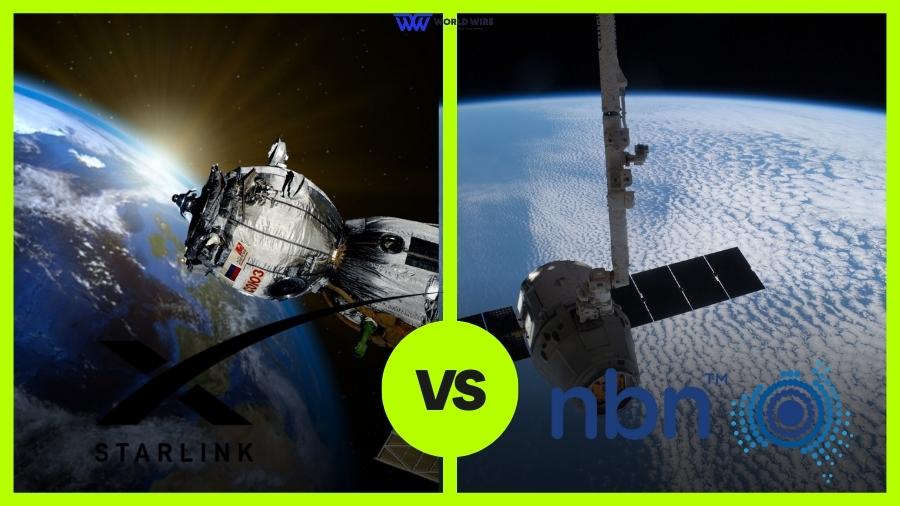

Add Comment